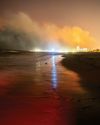CATEGORIES
Categories
Latest Stories

MEMBERS ONLY
A new crop of ultracurated wellness clubs is targeting loneliness and longevity in one go.

ANATOMY of a Fall
Inside the first week—and final hours—of the Harris campaign

TRIAL BY FIRE
Los Angeles is said to have no seasons, but what it does have is what Joan Didion called \"the weather of catastrophe, of apocalypse.\" Photojournalist STUART PALLEY turned his camera on this year's wildfires and shares his account of devastation and resilience

Style DRIVER
FASHION-FORWARD SIMONE ASHLEY REVS UP FOR A ROLE IN BRAD PITT'S SUMMER BLOCKBUSTER F1

Inside Man
Branden Jacobs-Jenkins's newest play on Broadway, Purpose, is another funny, heady, irreverent excavation into the psyche of an American family. Marley Marius meets its creator and cast.

Heart and Soul
Pierce & Ward designs a stellar, sweeping collection for West Elm

IN THE MIX
MINING COOPER HEWITT'S VAST COLLECTION, MUSEUM DIRECTOR MARIA NICANOR FOREGROUNDS 30 CENTURIES OF GREAT DESIGN FOR THE PUBLIC

SECRET GARDEN
LUSHLY PLANTED WITH ROSES, A WALLED SPACE OFFERS REPOSE AMID A SPRAWLING HISTORIC LANDSCAPE ON THE HUDSON RIVER

Good Sport
A humble pine dining chair made for Swedish country houses is today's hottest design trophy

FOLLOWING THE RULES
MLB has tested the ABS challenge system for years, just as it did for every previous rule change

Heralds of Spring
Snapshots of the energetic songbirds that captured readers' hearts

FUN HOUSE
Moschino creative director Adrian Appiolaza is spinning new classics inspired by the brand's provocative and mischievous history. By Chiara Barzini.

THE FAMILY BUSINESS
Together, Oren and Tal Alexander formed one of America's premier real estate teams, with billions of dollars in sales. Alon, Oren's twin, helped run their father's private-security firm. Now they await criminal trial in a Brooklyn jail, facing multiple accusations of rape and assault from women across the country.

TONI COLLETTE
The actor and Mickey 17 star on travel regrets, acupuncture, and jumping into the ocean

SHADOW PLAY
With the help of architect Kazuyo Sejima, a young couple sets up house in a century-old Kyoto machiya

A fine vintage
High above Manhattan, a sophisticated 1920s penthouse gets a sensitive makeover by Markham Roberts

THE LIFE AQUATIC
For designer Charlotte Biltgen and her family,

New Plants for 2025
Stunning fresh picks for your beds and containers BY WENDY HELFENBAUM

The Science of Bird Poop
An expert breaks down the complex chemicals of bird waste BY EMILY HANNEMANN

LIGHT LANDSCAPE, LIFE
David Hockney's paintings can be read as his life story. But a new exhibition at Paris's Fondation Louis Vuitton also shows us just how much he taught us to see.

Time's Arrow
An intimate falling-in-and-out-of-love musical, The Last Five Years, arrives on Broadway-with star power to spare.

Soft Side
Louis Vuitton revives a range of early textile designs by French architect Charlotte Perriand as luxe pillows and blankets

SHORTSTOP SUPERNOVAS
Gunnar Henderson, Bobby Witt Jr. and Elly De La Cruz form 'The Threequel' at shortstop, evoking past trios and influencing future generations with their power, athleticism and versatility

Converting to Clover
Learn the basics about this increasingly popular, pollinator-friendly lawn option

Small Spaces, BIG FLAVOR
INCLUDE THESE COMPACT FOOTPRINT FRUIT PLANTS IN YOUR CONTAINER GARDENS AND MIXED BORDERS FOR A TASTY HARVEST

Ask the Experts
Readers get answers to puzzling bird and garden situations

GWYNETH EVERLASTING
NOT LONG AFTER SHE WON AN OSCAR AT AGE 26, Gwyneth Paltrow BAILED ON THE INDUSTRY, FINDING A CREATIVE OUTLET AND CASH FLOW IN BUILDING HER OWN BUSINESS. NOW GOOP AND THE KIDS ARE ALL GROWN UP, LEAVING PALTROW FREE TO DO WHATEVER SHE LIKES, INCLUDING HER MAJOR MOVIE COMEBACK WITH TIMOTHÉE CHALAMET

GOD COMPLEX
SILICON VALLEY WAS ONCE DRIVEN BY A GODLESS CHASE FOR GROWTH. NOW THE NEW RELIGION IS RELIGION

Steeped in Tradition
Tapped by Loewe to reimagine the teapot, 25 global talents brew some bold ideas

Like a Fine Wine
In Provence, the historic Château de Beaucastel winery ages gracefully thanks to an update by Studio Mumbai and Studio Méditerranée
